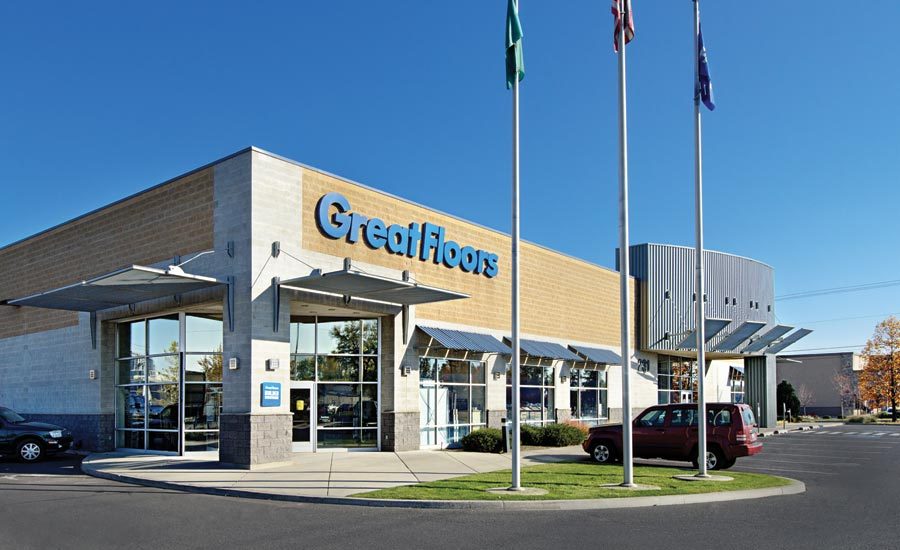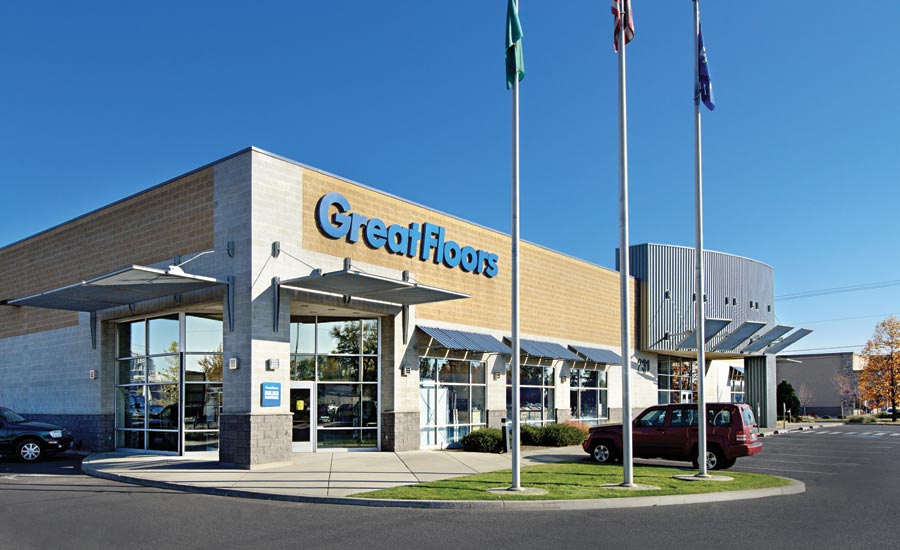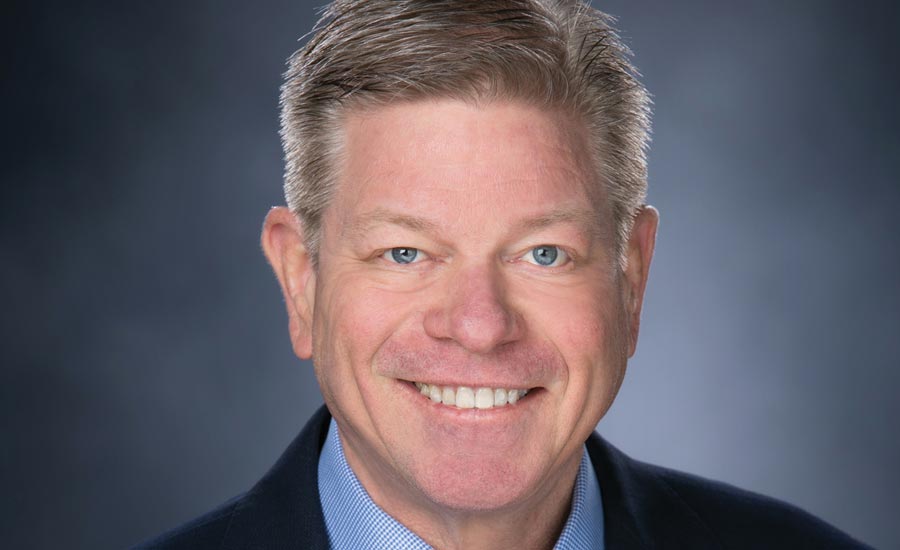A Conversation with Great Floors CEO Doug Chadderdon




Recently, we had an opportunity to sit down with Doug Chadderdon, president and CEO of Great Floors, to learn about the history of Great Floors and its progress and plans for the future. The conversation in its entirety can be heard in our Podcasts section. Following are excerpts of that conversation.
TF: Talk to me about the Great Floors organization and its history.
Chadderdon: We started as the Carpet Center here in Coeur d’Alene, Idaho, and sold that business to Shaw in the mid-90s. We were then spun off to Carpet Max and I became the regional VP. That lasted a few years, and when they filed for bankruptcy, we bought the assets of the Washington-based Carpet Exchange stores and merged them with Carpet Center and shortly after that changed the name to Great Floors. We had 16 stores at that time. We now have 22 with two dedicated commercial operations, which are units we acquired from DuPont and they really put us in the commercial segment. When we started, we were about a $40 million company in 2000, and we will do a little over $200 million this year.
TF: Has that growth afforded you the opportunity to initiate some changes in the organization that you otherwise might not have done?
Chadderdon: We have had tremendous commercial growth in the Pacific Northwest from companies like Amazon, Microsoft and Boeing, which been very active; so, we started to become involved in commercial work, and that’s now about an $80 million portion of our business. Plus, we have organically grown our new home construction business, which is now about 35 percent of our business with the balance being our retail business.
TF: What are your thoughts going forward, looking at each of these segments?
Chadderdon: In the northwest, I think we are going to help pace the rest of the nation as we have for 10 years. We expect to have about two times the growth that the rest of the nation will see. We are in a cyclical industry and that’s why we operate each of those three silos. Homebuilding since the downturn has really not rebounded to the previous historic levels and that’s a good and bad thing. I don’t see any surplus of new homes on the market, so I don’t think we have any risk there; so, I expect our homebuilding business to continue to grow at a modest pace, but a safe and healthy pace. We could see some reduction over the next couple of years in the rapid growth of commercial construction. But I also expect that replacement cycle to begin and we expect our retail business to grow back to its previous level as a percent of sales. It’s nice to have all three segments so you are insulated because some spike, like we saw in home construction from 2003 to 2007, and when that turned off we had the other areas to rely on.
TF: Let me ask you about your efforts afoot to build traffic and what you focus on as a means of doing that.
Chadderdon: It’s interesting. Years ago when I was a young guy, I handled all the advertising and it was basically three things, maybe four. You figured out your budget and the months you wanted to advertise on television and in newspapers. Then, you worked out agreements with each of the regional and local television and newspapers and put together an annual program, and then you’d do some radio. And you might complement that with some billboards. Now, that’s probably only a third of our total advertising budget. Now, the rest is all on the internet and social media and other things. We just had a presentation yesterday by the company that provides that service. I couldn’t believe how many hits we get in a month or in the first six months. It’s in the hundreds and hundreds of thousands. So we spend a lot of our time now just negotiating for media buys on all of the places we want to advertise.
TF: Are you a guy that wants to try the latest vehicle, online digital tools?
Chadderdon: I should be. When you think of that Seattle metro market with Amazon and Microsoft and all of those tech-oriented people, we need to reach out and communicate with them on the vehicles they’re watching. I don’t stream TV, but millions of people do. So, we have to have our media people educate me about advertising on streaming services like YouTube TV and Netflix and the like.
Just looking at our website, you couldn’t believe how many people visit the site. Looking at the percentage of people who click on your site, look at a couple of pages and request service, I am told 10 percent is very high. We were averaging 18 percent for the first six months of this year. So, part of that is a having a good website that’s inviting to consumers. But the other thing is the content and the convenience of our locations.
TF: I understand that many retailers are finding success with buying online and picking up at the store. Is that something you have considered?
Chadderdon: Actually, we do that and we’re integrating that right now. Today, you click on the site and tell us what you want there. There is a phone call because we haven’t completed our credit card processing yet. Then, you can pick up the product at any one of our locations. Doesn’t matter which one that is. That’s going to be a neat feature. And unfortunately internet sales are going to be a bigger and bigger part of our business especially in the palletized products such as LVT and laminate category that are more do-it-yourself oriented.
TF: Many suppliers have launched digital marketing programs with their retailer partners, which build the manufacturers’ brand perhaps at the expense of the retailer building his own brand. Talk about building your brand in a local area as opposed to building some of your suppliers’ brands.
Chadderdon: Well, you bring up a good point. We certainly want to promote the Great Floors brand before XYZ manufacturer’s brand. At the same time, consumers still don’t recognize very many brands in our industry. I think still today the top three brands at the consumer level would be Stainmaster, Armstrong and Karastan. I feel that most consumers haven’t heard of a lot of the brands we carry, so that manufacturing presence on the internet doesn’t have a great deal of relevance if there isn’t a pull through from the consumer looking for a specific brand. So, in our marketing we try to feature the major recognized companies to give assurance to the consumer that we have those products, but then we like to flare off and show all the nuances — for example, we import a lot of product from Asia and we like to show some of those unique products. So we view it more as a complement and less of a conflict.
TF: Let me ask you about closing rates within a retail organization. This seems to be an important element to monitor. How important is it to you to monitor your salespeople and their closing rates?
Chadderdon: We track it and we offer immediate training when we see someone’s close percentage drifting below the average. We have trainers and we’ll have them go spend a few hours or days with somebody who’s got a weaker closing percentage. We spend so much money on advertising and on great locations that are convenient for consumers, so when they do come in one of our stores, we know they have very specific intent. No one walks into a floor covering store without the intention to buy a floor covering. It should be 100-percent close rate. We have a pretty respectable closing rate but it’s something we monitor.
TF: Consumers spend hours researching online and I would suspect that puts pressure on salespeople to know at least what the consumer knows.
Chadderdon: One of my frustrations is when a customer comes in and knows more about a product we offer than one of our sales associates. That drives me nuts. Consumers spend a lot of time researching because it’s a big ticket item. They are very savvy, and you better know the specifications and applications for any particular product.
TF: How do you maintain healthy margins over long term?
Chadderdon: All of our store managers spend a lot of time monitoring each salesperson’s margins and then margins by sales category — whether it’s retail commercial or builder, we have standards for each of those categories. There’s always an exception, but it can go either way. Sometimes our margins exceed our expectations. I wish that was more often. But there are times when you’ve just got to be competitive, and I can’t control what a guy down the street quotes. But if we want the transaction and it fits our technical expertise, you know we’ll get very aggressive, but margins have been pretty good.
Looking for a reprint of this article?
From high-res PDFs to custom plaques, order your copy today!









